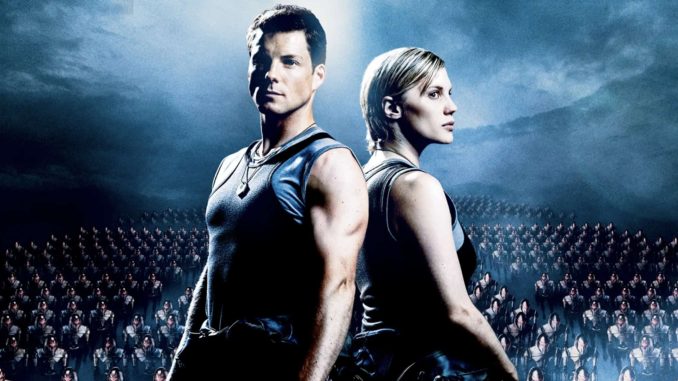
By Chris Snellgrove
| Published
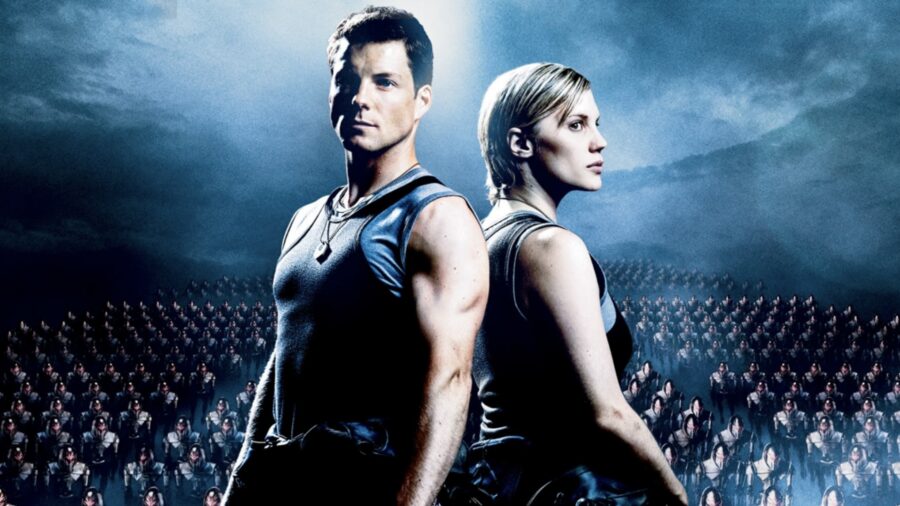
One of the biggest things that separated Ronald Moore’s Battlestar Galactica reboot is that it fearlessly confronted the political and social issues of the time. The most persistent issue the show tackled was America’s war on terror and how it prompted otherwise good people to support or even engage in completely immoral acts. On one occasion, though, this nearly derailed the show when SyFy execs pushed back against the “Flesh and Bone” episode for its frank depictions of torture.
Flesh And Bone
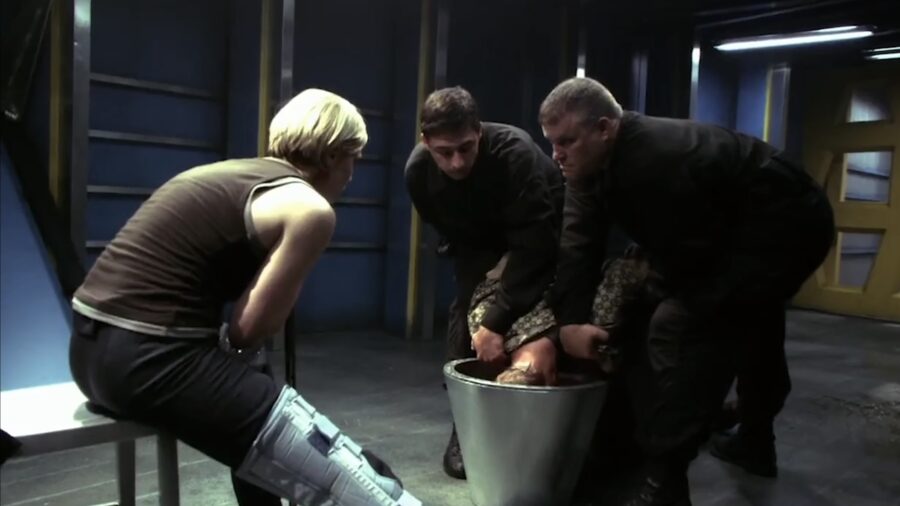
According to executive producer David Eick, “Flesh and Bone” is “notorious” because “it probably represented the most extreme period of tension and disagreement between ourselves and the network.” That’s because “there were drafts of the script that were pretty extreme in terms of what Kara was going to do to Leoben, and they were emblematic of what was going on at Guantanamo and places like that.” In a true bit of irony, the show wanted to highlight what makes torture so evil, but SyFy worried that these scenes would make audiences uncomfortable, which was the very goal of the producers.
Eick acknowledged that in “Flesh and Bone,” the “connection to our own culture was probably a bit more literal and precise and less metaphorical than it had been” in previous episodes. Perhaps because of this, the producers and SyFy execs ended up having the same arguments behind the scenes that Ronald Moore wanted audiences to have after watching. As Eick pointed out, they found themselves asking the network questions like, “it’s not a person, why are you telling us to cut the scene where she gouges his eyeballs out?!”
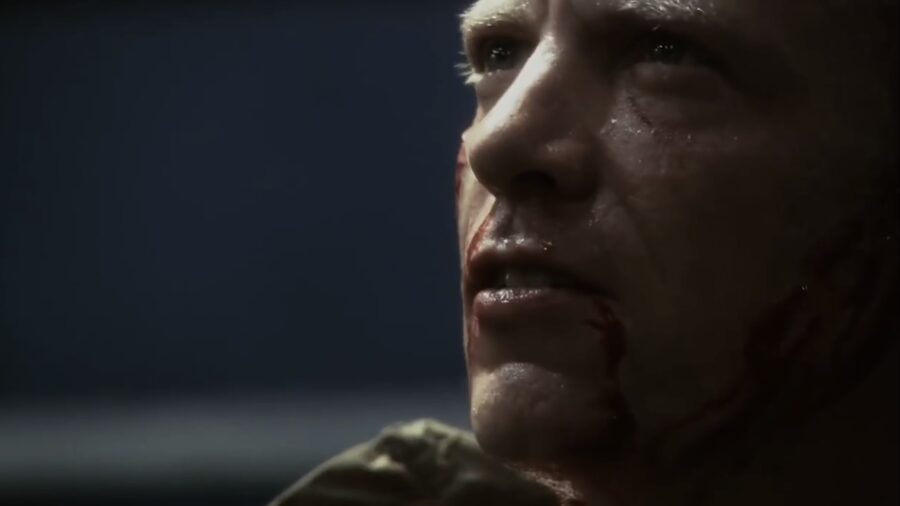
After saying that, Eick admitted that the earlier “Flesh and Bone” drafts didn’t have that exact type of torture in them but that this was a representative sample of the scenes that made producers ask SyFy, “why are you giving us grief about this?” The problem, ultimately, was that “we were trying to take something real and force the audience to have the same trouble with it that the network was having.” But the very fact that the network had trouble with these scenes nearly kept this boundary-pushing episode from seeing the light of day.
It seems that Moore, Eick, and the rest of the Battlestar Galactica creative team wanted to highlight both the immorality of real-world torture in places like Guantanamo Bay and the mental gymnastics conducted by those who condoned these actions in the wake of 9/11. When reports of the United States military torturing detainees came out, many defenders were quick to justify what were very obviously war crime atrocities by clinging to the dehumanizing language of the government. For example, these weren’t prisoners of war, these were “enemy combatants” who were members of the “Axis of Evil.”
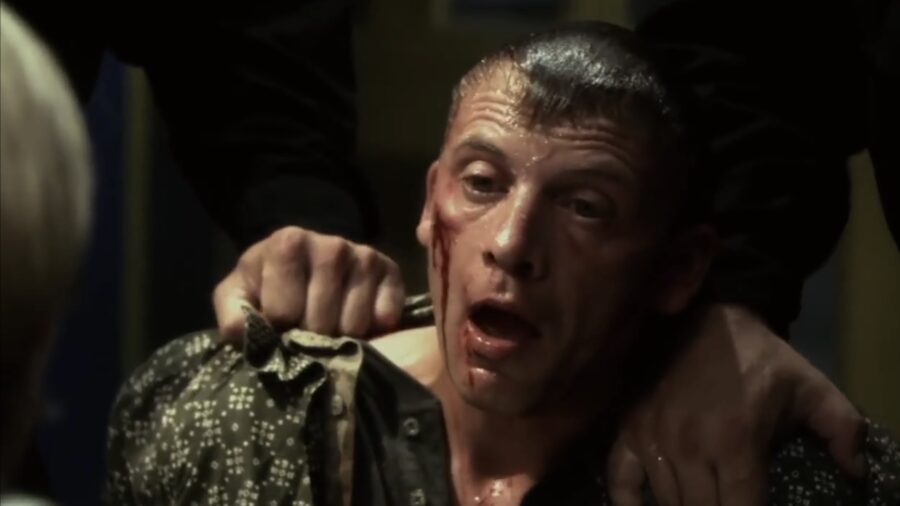
The common rejoinder to this dehumanization was that torture is always wrong regardless of who it is being done to and permanently taints everyone who participates in it. We can see that discourse playing out in “Flesh and Bone,” where Starbuck is charged with interrogating a Cylon who claims to have planted a nuclear bomb onboard one of the ships in the civilian fleet. She resorts to torture in an attempt to get the information she needs, and audiences naturally become more and more uncomfortable watching what she is doing, even knowing how many lives are potentially at stake.
That’s the point, of course: Starbuck has no trouble torturing a Cylon in “Flesh and Bone” because she doesn’t see him as a person but instead as a soulless machine. But we get uncomfortable because he starves, bleeds, and even preaches like a human, and the more we watch our hero torture him, the more we worry that she is losing some essential part of her own soul. This was the big mirror that David Eick and Ronald Moore were trying to hold up to society, confronting those who approved of the torture at Guantanamo Bay with how ugly the practice of deliberately causing horrific pain really is.
However, the producers were a little too good at their job. The early scripts for “Flesh and Bone” were brutal enough to make the network worry about putting this torture onscreen. At the same time, the creative team behind the show worried that if they didn’t show how bad this kind of thing really was, more of their audience would blithely support it. Fortunately, the final episode still makes its point in a powerful way, and (to the relief of the network and, frankly, ourselves), we didn’t have to watch Starbuck gouge a Cylon’s eyes out before the credits rolled.

Leave a Reply